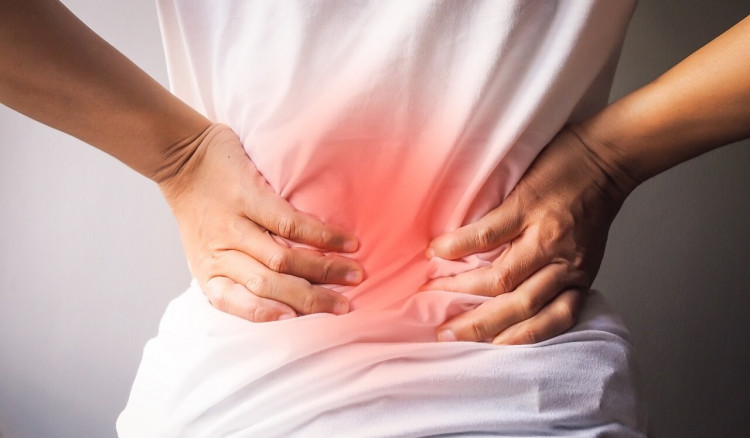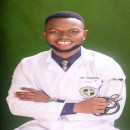
Low Back Pain
The amazingly flexible and mobile spine can withstand relatively enormous stress and serves as a protective armor for the spinal cord and its nerves. The necessarily complex structure consists of a series of bone segments, or vertebrae, which are divided into five distinct sections: the neck (cervical), upper back (thoracic), lower back (lumbar), lower spine (sacral) and the final segment (coccyx).
LOW BACK PAIN
Low back pain encompasses three distinct sources: axial lumbosacral, radicular, and referred pain. The great majority of backaches occur in the lumbar area, and the problem is usually referred to as low back pain.
Sometimes back pain is caused by damage or degeneration of the spine itself. If the vertebrae do not develop properly, they may slide against each other (this is called spondylolisthesis and other risk factors include gymnastics and sudden injury from football ) when the back is moved, instead of resting comfortably on the ‘cushions’ separating them.
The result may be not only a painful wearing-away of these important segments, but an actual pinching of nerves between the vertebrae themselves. This is known as spinal stenosis (spinal narrowing)
A related ailment is the ruptured disk, which has undoubtedly received more publicity than any other back condition. But the fact is that a ‘slipped’ disk is probably the least common of all back disorders, it occurs in about 1-3% of patients and only surgery can offer permanent relief from its great pain.
If someone who thinks she has suffered a slipped disk has been relieved by nonsurgical means, she probably did not have a ruptured disk in the first place. The wear and tear of daily life can compound the damage from defective or ruptured disks; so seek a doctor’s advice if you find yourself suffering from chronic backache.
On occasion, backache is a symptom of a serious ailment—for example, kidney or bone disease. Careful examination can detect such problems before they get out of hand.
LOW BACK PAIN CAUSES AND DIAGNOSIS
People with physically demanding jobs, physical and mental comorbidities, smokers, and obese individuals are at greatest risk of reporting low back pain. Fortunately, the great majority of backache sufferers need not be bothered with slipped or damaged disks or serious diseases. About 80 to 90 percent is of musculoskeletal origin, usually the result of poor posture or lack of flexibility or strength in the back muscles.
Of these, poor posture is the greatest culprit. Many doctors can predict which of their patients will develop low back pain simply by watching them walk into the office: the future sufferer will have a lumbar lordosis, or ‘swayback’ a condition in which the abdomen hangs forward, the buttocks protrude rearward and the spine is twisted more or less into a ‘C’ shape.
That posture is responsible when pain eventually develops in the lower back, for the spine is intended to be rod-like, not C-shaped.
Ordinarily, we have great flexibility in our hip and pelvic areas. Not only can we tilt our hips left and right, but we can tilt our pelvic area outward and inward—forward and back. We accomplish a forward tilt by contracting our abdominal muscles, which lift the front of the pelvic bone upwards.
But there are three reasons the person with a swayback cannot easily accomplish the movement:
- The abdominal muscles are too weak to lift the pelvis
- The various muscles at the front of the thigh, which are attached to the lower part of the pelvis, are not sufficiently flexible and hold the pelvis down
- The back muscles are like the thigh muscles, they continue to tug the rear of the pelvis upward, which tilts the front downward.
If you are not sure whether you have swayback, there is a simple test you can take.
Lie on the floor on your back, with legs stretched out and knees straight. Now, slip your hand under your back. With your palm on the floor, the upper part of your hand should be resting firmly against your spine.
If your back does not touch your hand, you have at least some degree of lordosis.
WHAT TO DO FOR LOW BACK PAIN
Once your doctor has eliminated the possibility of structural defects in your spine, you might practice two simple exercises to strengthen abdominal muscles and stretch the back and thigh muscles:
- Lying flat on your back with your arms across your chest and your knees bent slightly curl your head and shoulders up towards your knees.
It is an ordinary sit-up exercise except that the bent knees make the abdominal muscles do all the work
2. Lying on your back, lift the buttocks off the floor until your body makes a straight line from your neck up to your knees.
This stretches the thighs and strengthens the gluteal muscles (buttocks), which help the abdominal muscles to tilt the pelvis forward.
Sometimes emotional tension causes back muscles to tighten, resulting in back pain. Anything that would loosen those muscles—gentle stretching, a vacation, tranquilizers—will ease the back pain.
An excessively soft bed can also cause an aching back, because as the body sinks into it, muscles that are being stretched have a tendency to contract against the stretching. After hours of such tension, the muscles will begin to ache.
One common solution is to place a bed board between the springs and the mattress to keep the back straight.
The consensus today is that surgery, while required on occasion is neither necessary nor helpful in most cases of low back pain and should not be undertaken lightly. The wise backache sufferer will get several professional opinions and try simpler method of relief before consenting to an operation.
To see and learn how to perform simple exercises to treat your low back pain and other body issues, register here to access our therapy videos.
Would you like to learn how to provide pain relief, improve strength, increase range of motion and perform types of physical therapy?
This free online physical therapy treatments course will teach you the safest and most effective ways of moving and transferring a patient who requires therapy. A physical aide has a very important role to play in caring for a patient, this physical therapy treatments course includes the specialist knowledge and training required to work as a physical therapy aide, and gives you a strong understanding of essential therapeutic exercise techniques. Register for this course here
REFERENCES
Reader’s Digest Family Health Guide and Medical Encyclopedia: The Nuisance Ailments
Low Back Pain, a Comprehensive Review: Pathophysiology, Diagnosis, and Treatment by Ivan Urits, Aaron Burshtein, Medha Sharma et all
What low back pain is and why we need to pay attention by Jan Hartyigsen, Mark J Hancock, Alice Kongsted, Lancet Low Back Pain Series Working Group et al






Share This Article: